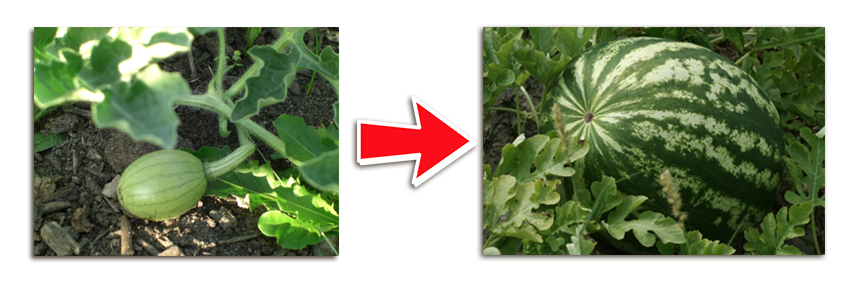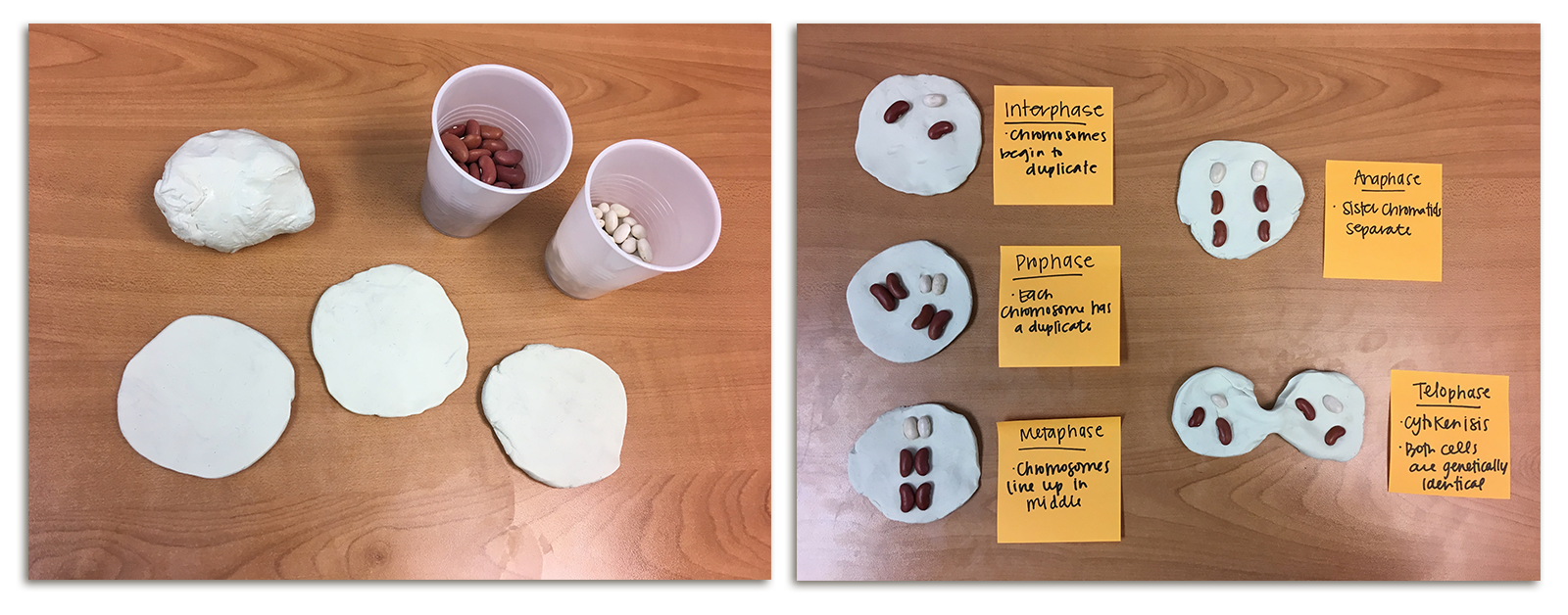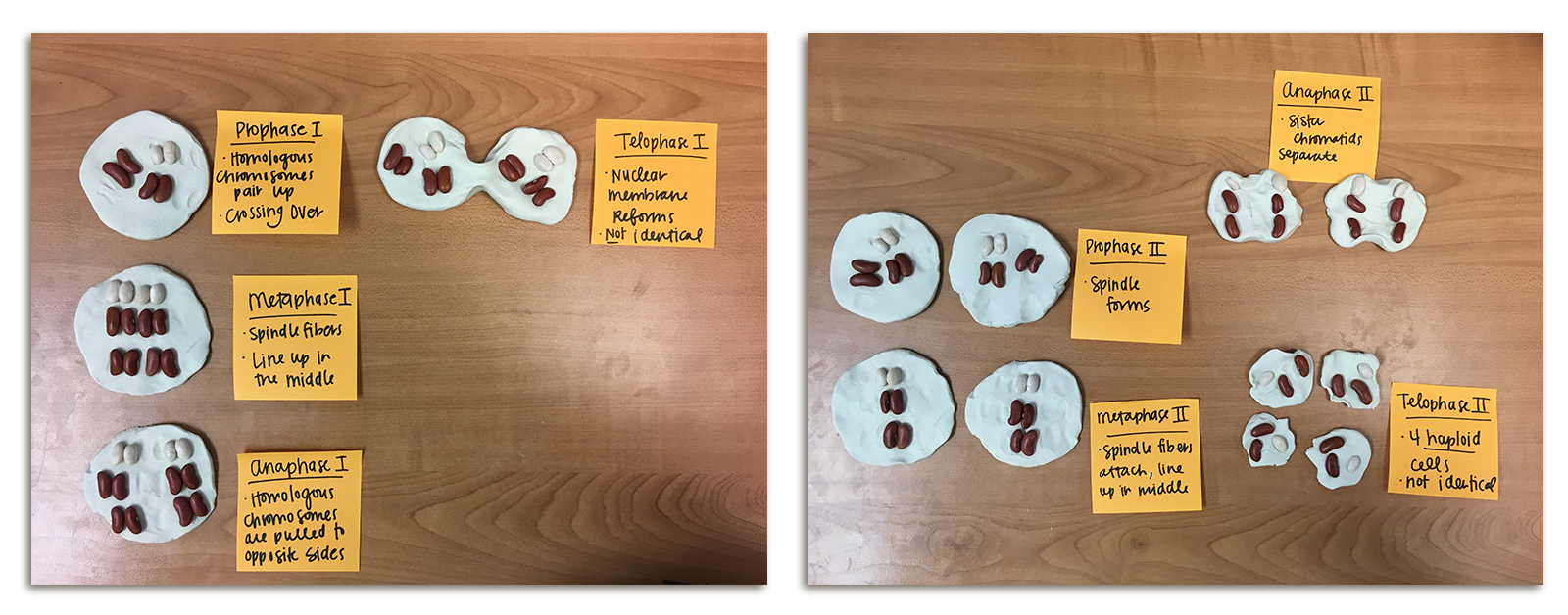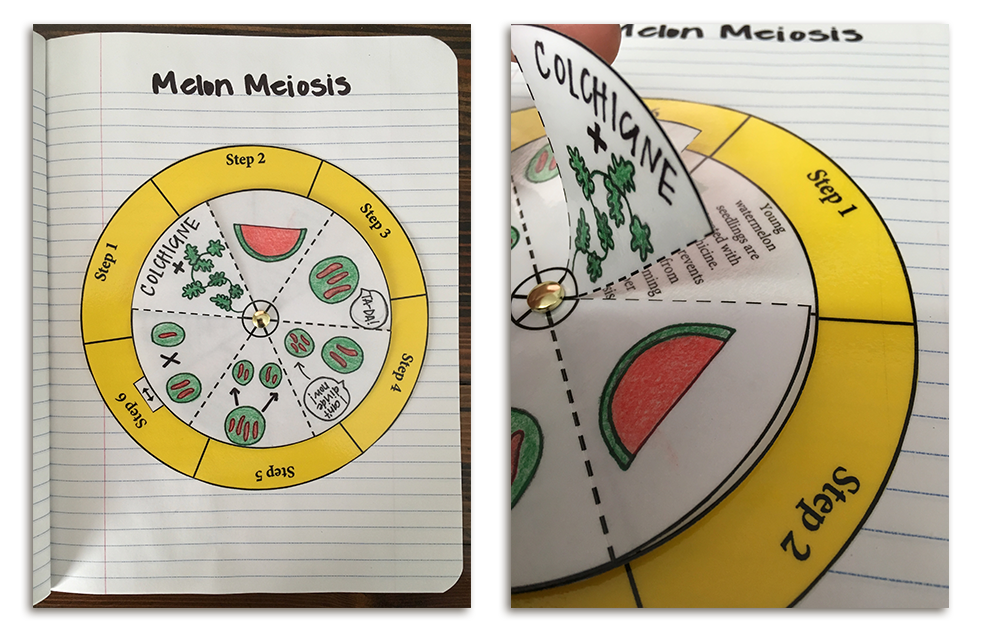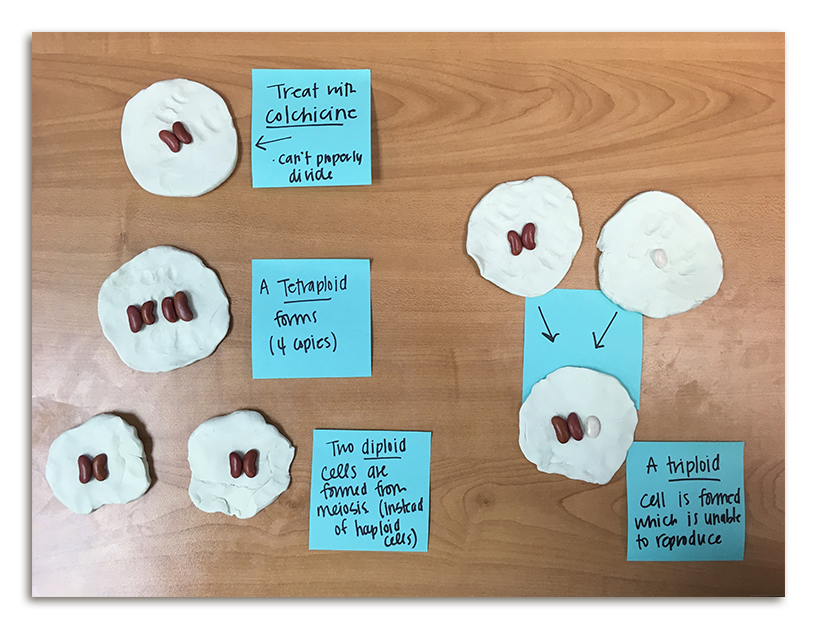Mitosis, Meiosis, and Watermelons
Both mitosis and meiosis are processes that reproduce cells. Mitosis produces exact genetic copies of cells to allow growth as well as to replace worn out cells. One cell can divide into two cells, called daughter cells. Each cell has an exact and identical copy of DNA with a full set of chromosomes. The chromosomes are threadlike structures found in the nucleus of living cells carrying genetic information, known as DNA, in the form of genes. In the case of watermelons, they have 22 chromosomes. Mitosis divides cells allowing one cell to become two, two cells to become four, and so on. Mitosis allows watermelon to grow from small to large. For this lesson student's understanding for sexual and asexual reproduction would be required for helping them gain an understanding for producing a hybrid such as seedless watermelons.
Meiosis differs from mitosis in that it only takes place in the reproductive organs to produce gametes, or reproductive cells. Reproductive cells are produced through the process of meiosis. Meiosis is different than mitosis because it produces cells with only half the total number of chromosomes. In the case of a watermelon, the male sperm cell and the female ovule each have 11 chromosomes. When fertilization takes place a single cell is formed with a complete set of 22 chromosomes.
Development of the Seedless Watermelon
O.J. Eigsti was a botanist and plant geneticist from Goshen, Indiana who discovered that colchicine, a chemical derived from crocus plants, could cause a plant to double its chromosomes. A Japanese scientist named Kihara used Eigsti’s chromosome-doubling process to produce the first seedless watermelon.
The seedless watermelon is a hybrid, a cross between two different kinds of watermelon. Since the purpose of seeds is reproduction, Kihara had to develop a watermelon that could not reproduce. The normal watermelon is called a diploid because it has two sets of chromosomes per cell (di- means two). By treating normal watermelon seedlings with Eigsti’s discovery, colchicine, Kihara produced watermelons with twice as many chromosomes in each cell. This watermelon, called a tetraploid, had four sets of chromosomes per cell (tetra- means four).
For Kihara, the next step was to cross-breed a tetraploid with a normal diploid as the pollinator. Since cells from each plant contribute half their chromosomes in the reproduction process, the result was a triploid plant. Triploids have three sets of chromosomes per cell (tri- means three). This triploid seed will germinate and grow into a triploid plant bearing triploid male and female flowers, but the flowers will not produce viable sperm-bearing pollen or eggs because of the odd number of chromosome sets (3). With three sets of chromosomes, one set will not have a matching set to pair up with during meiosis. When flowers of this sterile triploid plant (called the seedless watermelon plant) are pollinated by a normal plant, seedless fruits develop.
When you buy seedless watermelon seeds, you get two kinds of seeds, one for the fertile diploid plant and one for the sterile triploid. The triploid seeds are larger, and both types of seeds are planted in the same vicinity. Male flowers of the diploid plant provide the pollen which pollinates (but does not fertilize) the sterile triploid plant. The act of pollination induces fruit development without fertilization, so the triploid watermelons are seedless.
Commercial Production of Seedless Watermelon
Most commercial watermelon growers do not grow triploid watermelon from seed because it is too expensive. The seed of diploid watermelon costs about five cents per seed, the seed of triploid watermelon costs about 30 cents each. Triploid seed is also very sensitive to temperature and overwatering.
Instead of planting seed in the field, growers buy plants from companies that start the seed under very restricted conditions. The seeds are placed in a soilless mix, watered only once, soon after planting, and covered with plastic. They are kept at temperatures between 90 and 100 degrees F. for 2-3 days, until they germinate. At that time they are moved to a greenhouse where they are treated like any other plant.
After 2-3 weeks they are shipped out to the watermelon fields for planting, where they grow vigorously, like any other watermelon. However, they must be planted with regular diploid watermelons for pollination.
Because the seeds in a triploid watermelon are infertile, the melon adapts by adjusting to the new conditions. The inner, red fruit is often firmer than a seeded watermelon because it does not soften to cushion developing seeds. For this reason, it can also be kept longer on the grocery store shelf.

